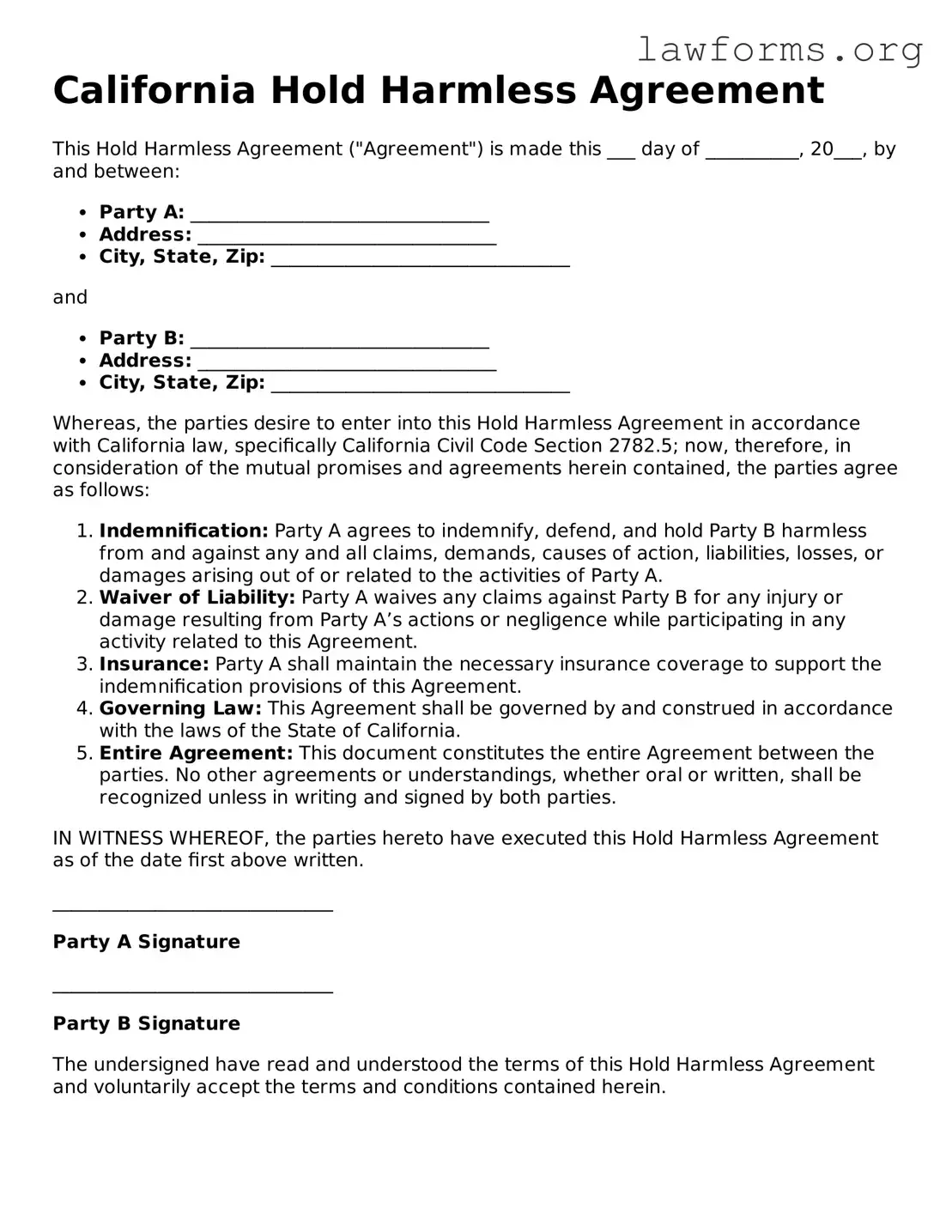California Hold Harmless Agreement
This Hold Harmless Agreement ("Agreement") is made this ___ day of __________, 20___, by and between:
- Party A: ________________________________
- Address: ________________________________
- City, State, Zip: ________________________________
and
- Party B: ________________________________
- Address: ________________________________
- City, State, Zip: ________________________________
Whereas, the parties desire to enter into this Hold Harmless Agreement in accordance with California law, specifically California Civil Code Section 2782.5; now, therefore, in consideration of the mutual promises and agreements herein contained, the parties agree as follows:
- Indemnification: Party A agrees to indemnify, defend, and hold Party B harmless from and against any and all claims, demands, causes of action, liabilities, losses, or damages arising out of or related to the activities of Party A.
- Waiver of Liability: Party A waives any claims against Party B for any injury or damage resulting from Party A’s actions or negligence while participating in any activity related to this Agreement.
- Insurance: Party A shall maintain the necessary insurance coverage to support the indemnification provisions of this Agreement.
- Governing Law: This Agreement shall be governed by and construed in accordance with the laws of the State of California.
- Entire Agreement: This document constitutes the entire Agreement between the parties. No other agreements or understandings, whether oral or written, shall be recognized unless in writing and signed by both parties.
IN WITNESS WHEREOF, the parties hereto have executed this Hold Harmless Agreement as of the date first above written.
______________________________
Party A Signature
______________________________
Party B Signature
The undersigned have read and understood the terms of this Hold Harmless Agreement and voluntarily accept the terms and conditions contained herein.
